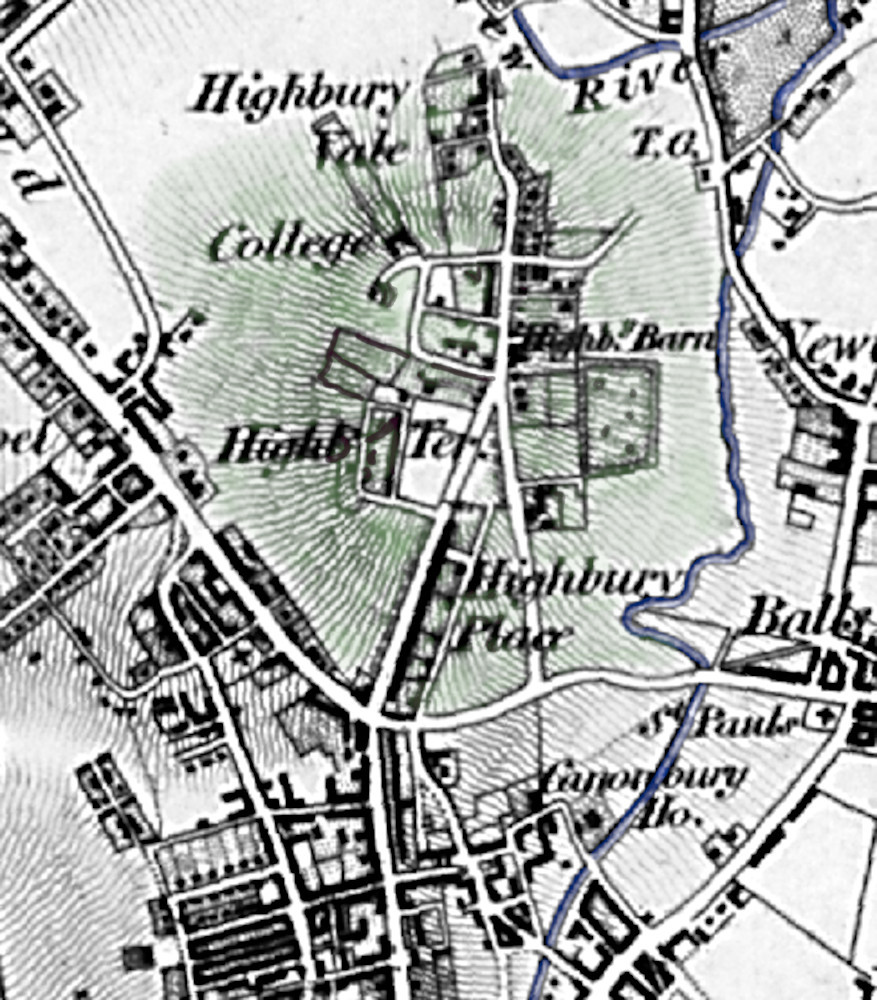
History
Well camouflaged by the streets laid around it, Highbury Fields forms the southern flank of a distinctive hill rising to nearly fifty metres above sea level. Cleared of its roads and houses the hill is prominent enough that early historians, noting the nearby route that Ermine Street took to the north, were convinced that a Roman camp had occupied the summit. Water was certainly plentiful - springs flowed into the City from the southern end of the fields until the eighteenth century - and the fall of the land to the north and west was steep enough to make a defensive position. But despite this, little practical evidence has been found of Roman occupation and the realistic history of the fields starts with the construction of a house on the highest part of the hill in the thirteenth century to form Highbury (literally the high fort) Manor. In the late thirteenth century, records show Lady Alicia de Barowe as the owner, gifting an annual payment to the nuns of St Mary Clerkenwell to remember her in prayers for perpetuity.
Shortly afterwards in 1271, the Manor passed to the nearby landowners the Knights Hospitallers of St John of Jerusalem and the successive Lord Priors took up residence in the manor house. Neither the Knights nor the Priors sought popularity or indeed poverty and by 1380, Sir Robert Hales had taken the position of Grand Prior and completely rebuilt the manor house in the finest materials and filled it with treasures from his expeditions in the Middle East. A contemporary source wrote: 'He constructed afresh the manor house of Highbury and made it as elegant as the alternative Paradise, as good as the Garden of Eden'.
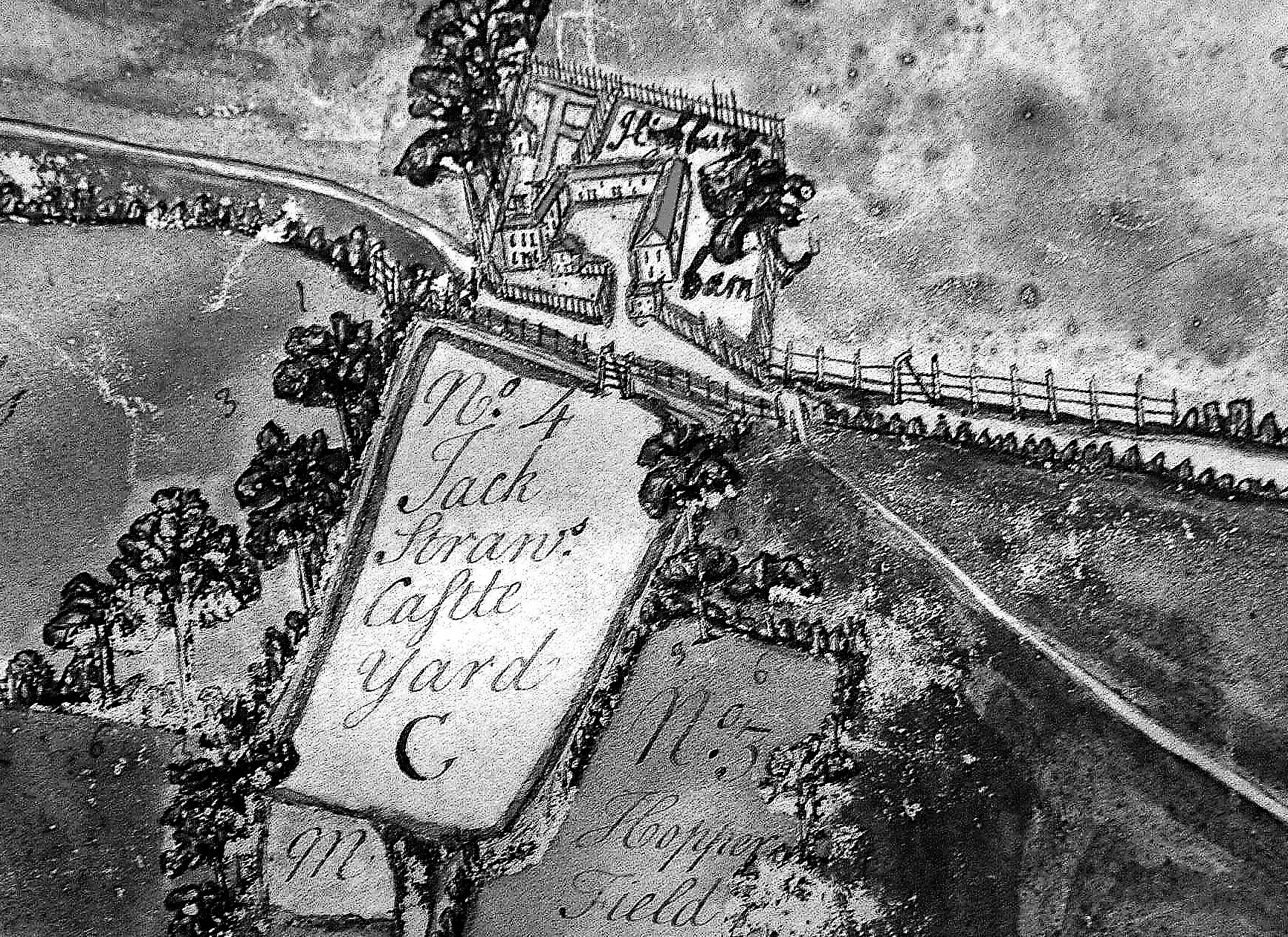
Paradise didn't last long - on the 13 June 1381 the priory at Clerkenwell was destroyed as one of the first targets of the Peasants' Revolt and the unpopular Sir Robert became a target for the rebels, fleeing to the Tower of London. Jack Straw led a mob, including some of Sir Robert's servants, to the manor house and set it alight. So solidly was it built that fire was not enough and the mob had to pull it down stone by stone. Robert Hales was beheaded at the Tower and the manor house lay in ruins. The site became known as Jack Straw's Castle and the ruination so complete that by 1611 a survey of the land recalled only that there had been a 'capital mansion standing within a moat yet remaining... the house was decayed beyond the memory of man'.
Highbury House
For four hundred years, the moated site stood empty - a convenient cattle pound - and Highbury Manor saw little development. The ownership of the derelict land and the nearby barn passed through different hands until in the 1770's John Dawes, a successful stockbroker, began buying up fields and plots of land around Highbury with the goal of establishing a grand country house on the summit. Mr J.C. Brooke reported that 'Dawes, formerly a .. broker to Hoare's ... who purchased the Manor of Highbury a few years since ... is about to build himself a house on the site of Jack Straw's Castle; and has paled around a considerable space of ground for a park ... which will have a delightful view of the Essex hills, the vale below Hornsey, Highgate, and Hampstead, and Islington'. By 1781 and ten thousand pounds later, Dawes had a fine Georgian house. Unfortunately like Prior Hales before him he was not to enjoy it for long; Dawes died in 1788.
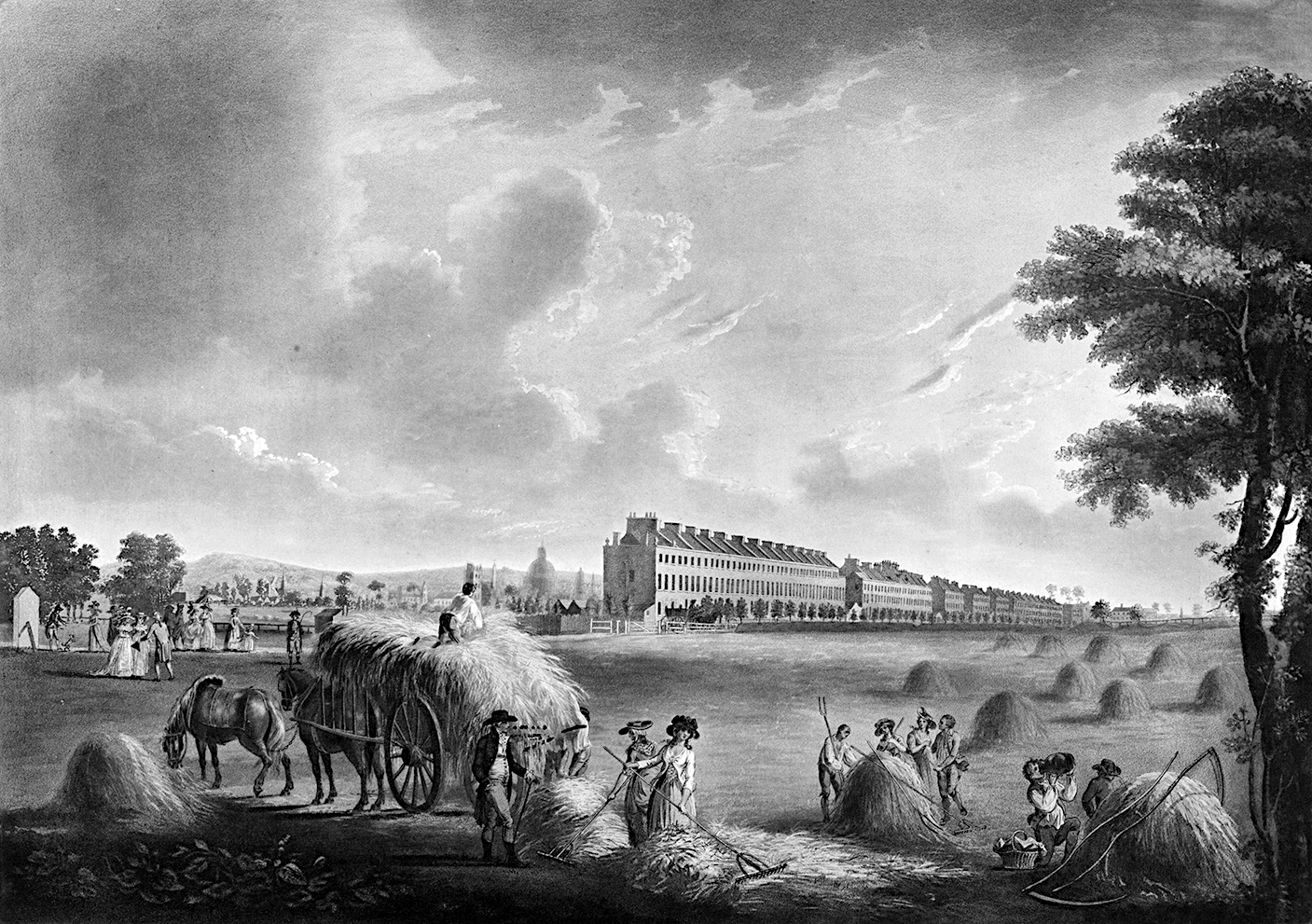
Before his house was built though, Dawes also embarked on an ambitious development. In 1773 he purchased rights to Weryngs at the southern end of the fields, a plot of land used by the brewer, Henry Walker of White Cross Street, because of its access to water. This final piece gave Dawes control of Highbury Fields and the surrounding area - 247 acres in total - and he leased a strip of the resulting Fields to the London builder, John Spiller. Starting in 1774, Spiller built a speculative terrace of Georgian townhouses starting in the south and working northwards until finishing in 1777 - Highbury Place, with fine views to East and West. Pipes were laid from the springs into cisterns in the houses and leases were put onto the market. Initially interest was limited; Spiller had to settle in number 39 to encourage confidence, and the final lease was only taken in 1779. But the development of the Fields had started.
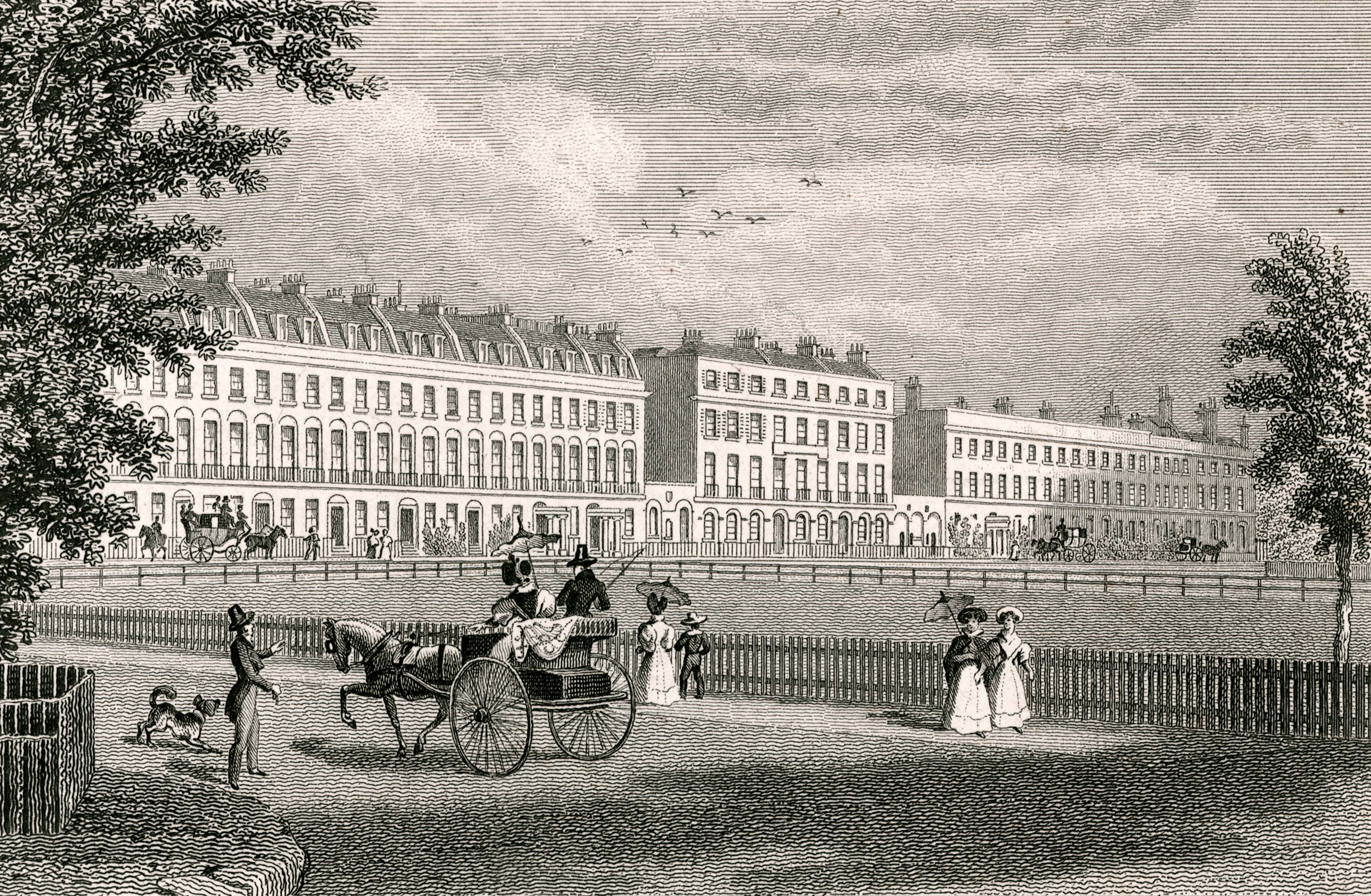
After Dawes death, there was further speculative building - in 1789 work started on Highbury Terrace by multiple developers, running a terrace of houses north of Highbury Place which preserved its view. The houses ran along the ridge of the hill to the north west of the Fields and like Highbury Place before it, there were magnificent views to the East and West. The houses were grander and taller, with the first floor windows from ceiling to floor as was the fashion in the late 18th century. For the next fifty years or so, these two terraces stood alone on the Fields lying below the grand Highbury House - Highbury Crescent didn't start development until 1844.
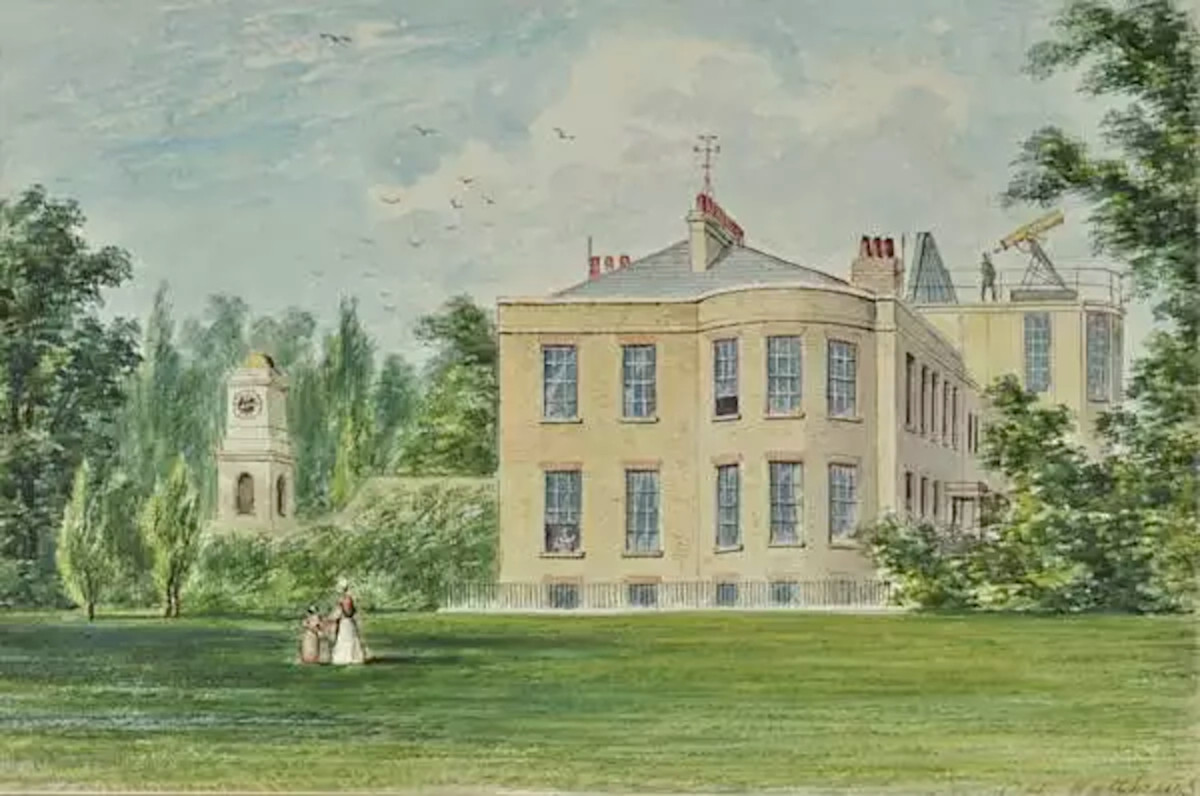
After John Dawes' death the House was sold at a considerable discount to William Devaynes for £5,400 (the suggestion at the time being that the house was sub-par for its location) and then in 1797 to the astronomer Alexander Aubert, who bought the House and its gardens for £6,300. Aubert invested heavily in the house and its grounds, building an observatory of three storeys to house his collection of astronomical instruments. This tower was to his own design and featured a solid stone pier rising up through the entire structure to isolate the powerful telescopes from the vibrations caused by observers moving around the surrounding floor. Aubert delighted in taking guests to the top of the observatory and viewing ships moving on the Thames at distant Gravesend.
Aubert's time at Highbury House represented its high point. After his death in 1805, the house was sold to John Bentley who enjoyed the gardens including 'a plantation of tobacco, which, in October 1809, was standing seven feet high ... (he harvested) a hogshead of that entertaining exotic but lost most of it because he did not (know) how to dry and cure it'. After Bentley, decline set in as successive owners suffered financial misadventures causing first the contents and then the gardens to be sold off piece by piece.
Highbury House with 74 acres of land, tithe free and land-tax redeemed. Those distinguished freehold and Crown leasehold premises, an elevated, healthy and beautiful situation, commanding rich and extensive views, and though three miles only from the Royal Exchange, are as retired as if 100 miles from London, consisting of a very commodious, substantial and handsomely fitted up residence … large and productive walled gardens, hot and green-houses, pineries, melon-ground, ice-house, plantations, groves, shrubberies, extensive shaded and gravel-walks, fish-pond, entrance lodges, and rich meadowland, lying within a ring-fence. This property forms as complete and desirable a property as any in the county.
§ The Times, 5 April 1817

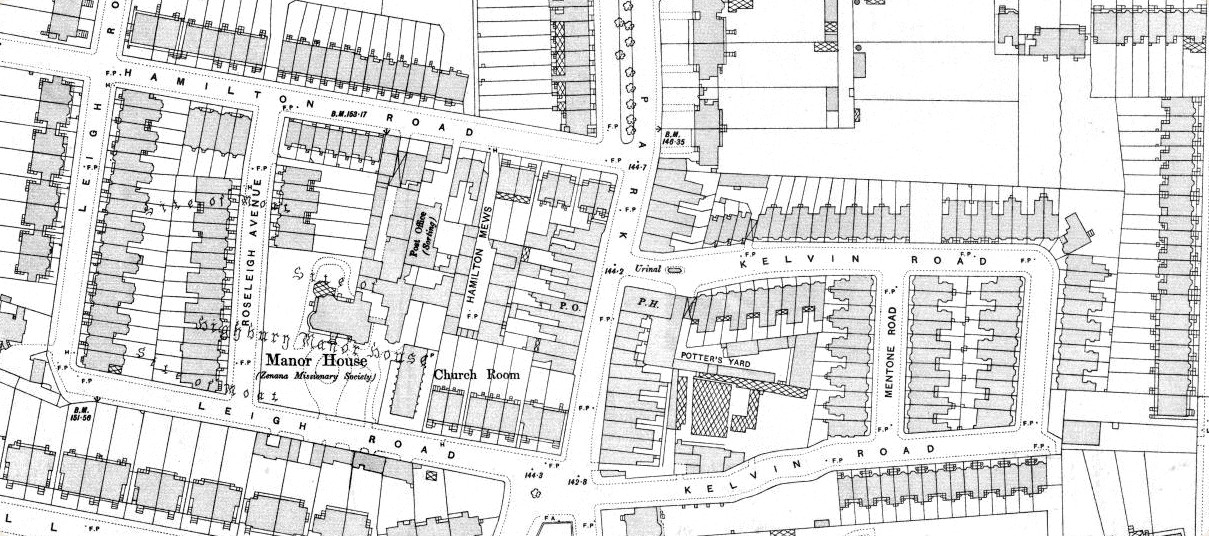
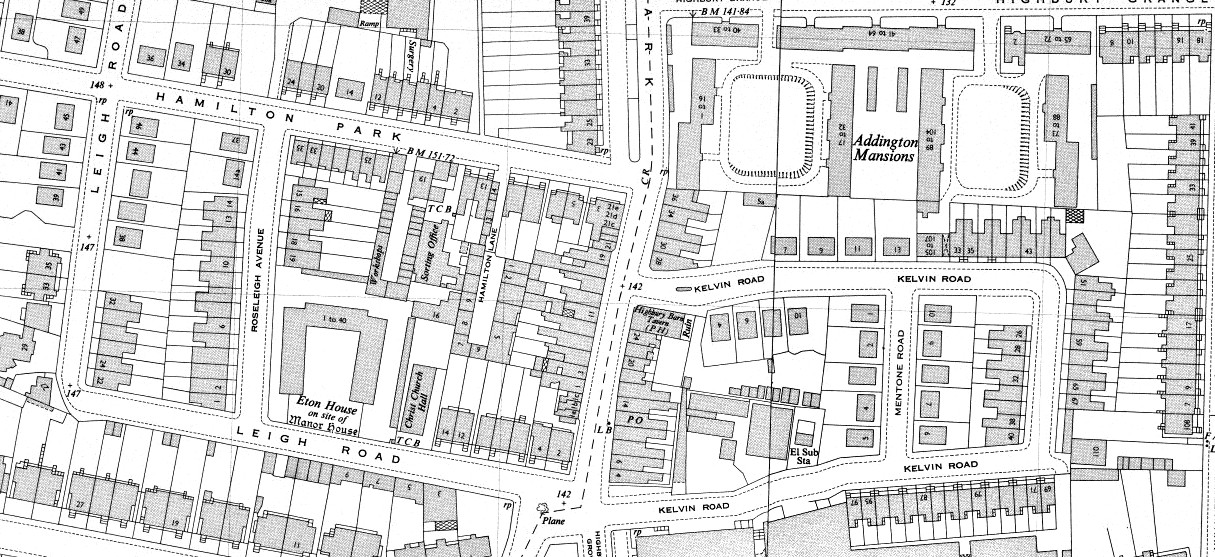
In 1855 the moat was filled in; in 1887 the house passed into institutional hands when the Zenana Church of England Missionary Society took over; in 1939 the House was pulled down and flats put up. Slowly and surely, through the action of developers and the inaction of the authorities, Highbury House was erased from Islington.
Only a shadow of it remains in Leigh Road and the surrounding street plan.
Nineteeth century development
If the parks be the lungs of London then has the northern district of the metropolis no respiratory organs ... the situation of Highbury appears to be the only situation at present adapted for the purpose, the site of Park-Terrace being about the centre of a circle or any other form in which it may be advisable to make a park. Highbury is one of the highest localities in the suburbs of London, proverbial for the purity of its air, and within little more than two miles of the City.
§ The Lady's Newspaper, 1850
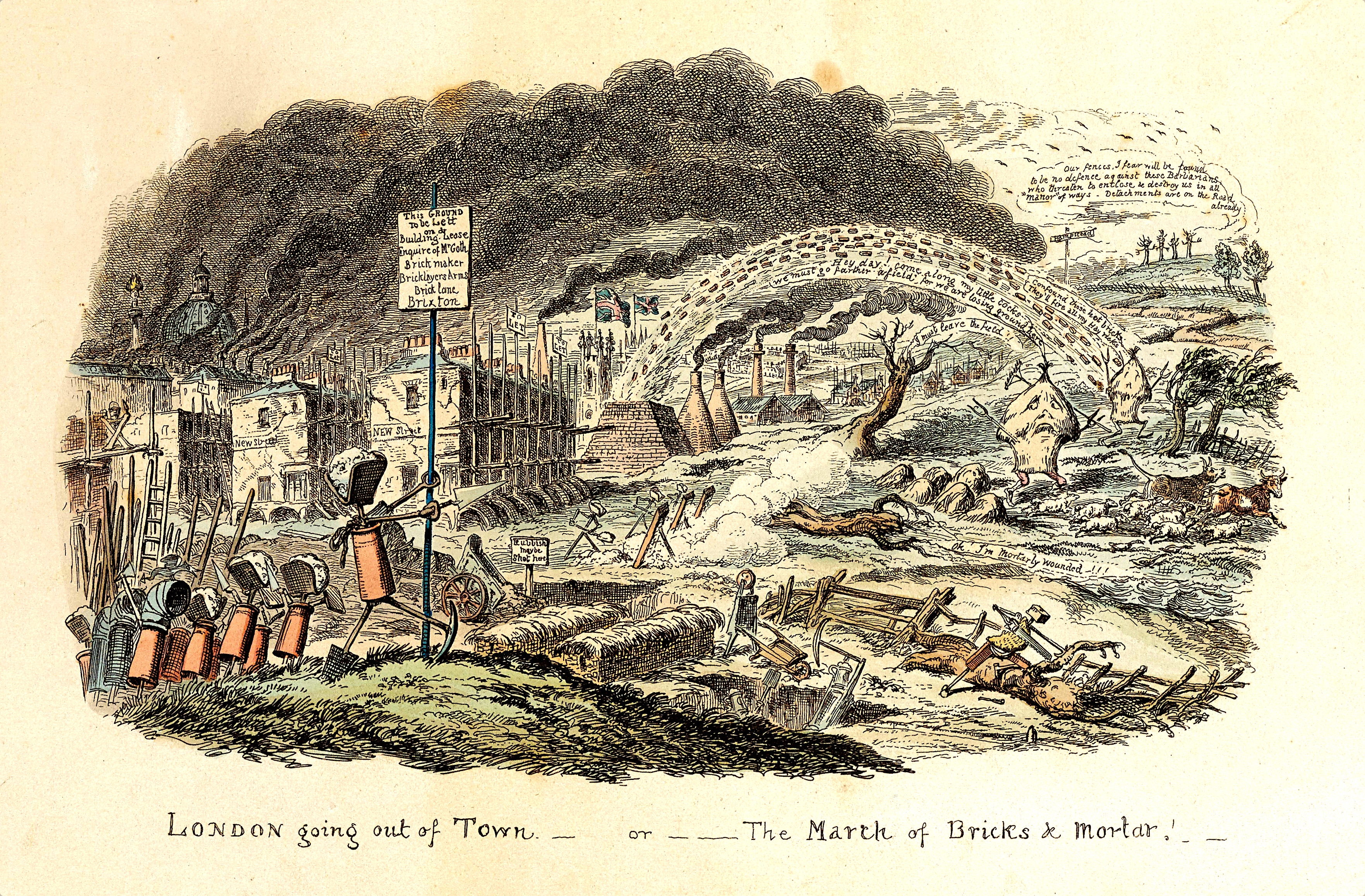
Highbury's seclusion and quiet appealed to prosperous City merchants, but with the end of the Napoleonic wars and the economic and social revolutions that followed this peace came inexorably under attack. Though some houses had been built to the north of Highbury Terrace by 1800, the first real development in Highbury Fields came with the building of Highbury Crescent by James Wagstaffe, a local architect and builder. Though this contained only fourteen houses by 1846 it was clear what the future would bring.
In the 1840's Battersea Park and Victoria Park had been carved out to protect green spaces from the predations of developers and by 1851 Pennethorne had produced a design for a park to be called Albert Park covering the area from Highbury Grove in the south to the New River's reservoirs in the north and from Green Lanes to the Hornsey Road.
With developers circling, the creation of a 500 acre park needed a bill to be passed in Parliament which the government and the press supported. Unfortunately the government fell in March 1852 and the bill never passed. An attempt was made the following year with a less ambitious scheme but the government fell again and Albert Park was dead.
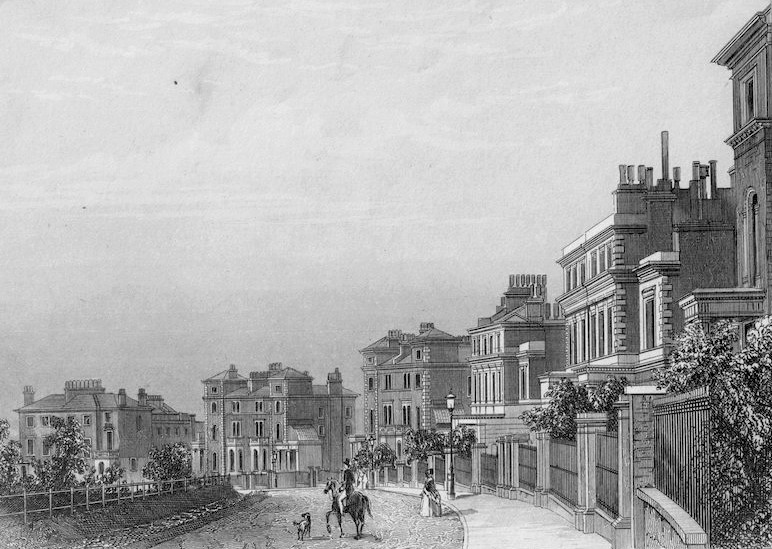
Though Finsbury Park was created by Act of Parliament in 1857 it took another 12 years to be created and the green space in front of Highbury Place, Terrace and Crescent was still under threat.
Fortunately, Highbury Fields were acquired in 1885 at a cost of £60,000, half of which sum was contributed by the Islington Vestry, the rest the Metropolitan Board of Works. On 24 December 1885 the 25 acres of the Fields were thrown open to the public by Sir John Edwin Bradfield, a member of the Vestry as Chairman of the Parks and Open Spaces Committee of the Metropolitan Board of Works. The workhouse boys band was there in attendance and the proceedings were followed by a luncheon at the Cock Tavern.
As well as preserving the fine views from the grand houses, the public finally had free access to a much needed green park.
By 1887, and perhaps predicatably, it was reported that the fine turf and the larks that used to hover and sing had disappeared and 'disorderly characters frequented the fields'. Open air band concerts disturbed the peace and there were reviews in the Fields of Territorial Army corps.
Sir,
Will you kindly permit me, through your valuable column, to draw public attention to the scandalous state of affairs in front of this house. During the last few weeks, the place has been the resort of all the ‘raggedism’ of the parish.
The yelling and screaming of countless children has been so intolerable that I, who have lived here all my life, am being driven away. Surely it was never intended that nearly £80,000 of public money should be spent on the ruthless destruction of the once valuable property surrounding Highbury Fields. Unless something is speedily done, it is quite certain that Highbury Place and Highbury Crescent will very quickly degenerate to the level of slumdom.
§ J. Wagstaff to the Islington Gazette 1887
Sir,
Will you permit me to trespass on your space for the purpose of protesting against the action of the Vestry in closing Highbury-Fields at dusk.
By this action (a very expensive one) the use of the fields is entirely denied to a large section of the population to which it would be highly beneficial; nor would the benefit affect that section only, but indirectly the whole neighbourhood.
Until almost dark, the fields are full of children of various ages, playing and, of course, shouting and howling, rendering the place a perfect pandemonium, quite impossible as a place of rest and recreation for grown persons, the hard-worked bread winners, to whom a quiet stroll on the turf, or a seat in the fresh air, would be an inestimable boon in the summer evening. As it is, a great many of them must sit at home in a close and foetid atmosphere, loaf about the streets, or go to the public house. Also there are others whose work is not over until a late hour.
I have been told that the cloture was applied, on account of the 'disgraceful scenes' witnessed last summer after dark, I presume, by the dwellers in Highbury-grove, Highbury-place and Highbury-crescent, aided, perhaps, by the caretaker who patrolled the fields, and found the work tedious.
Now I think that few persons have had a better opportunity of bearing witness on this subject than myself; as on two or three evenings in each week throughout last summer, I walked about the fields with my dog, or sat down on one of the comfortable seats, and smoked the pipe of peace. I always went there after dusk, say between eight and ten o'clock, and never saw anything more shocking than the arm of a lover round his lady's waist, which I must allow did not strike me as being very disgraceful, considering the time and place, but perhaps my code of morals is not so exalted as that of the inhabitants of Highbury-grove, &c.
§ H.F.J., Canonbury, May 23rd, 1887.
Twentieth Century
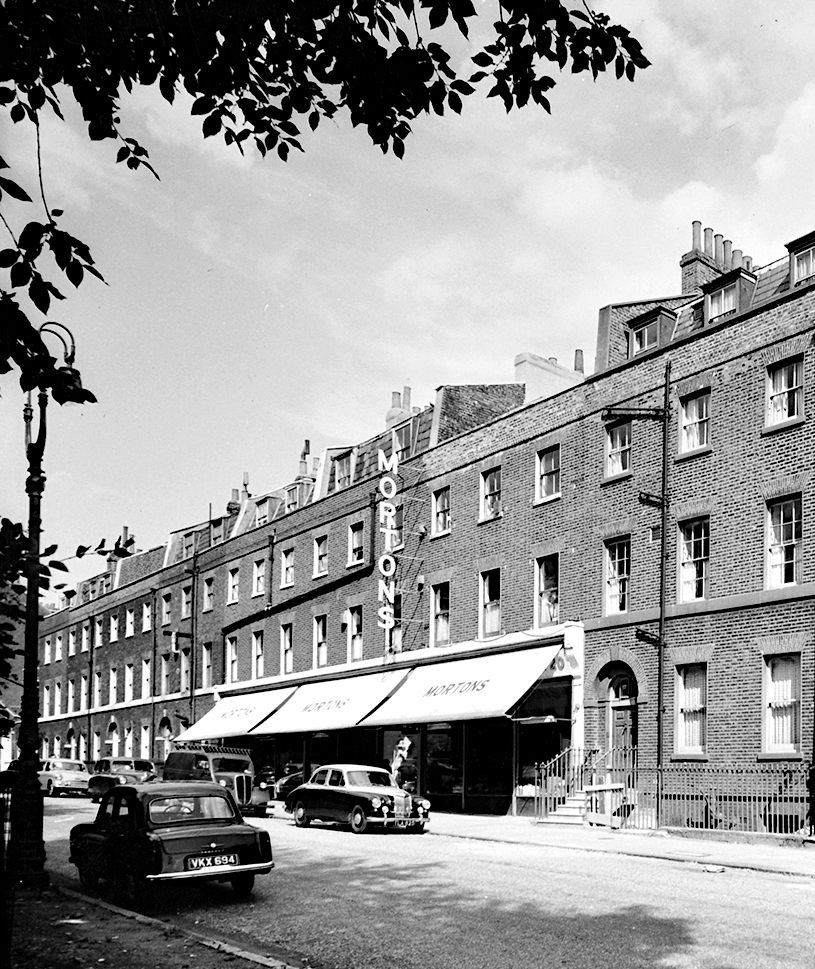
Islington did indeed suffer decline in the twentieth century though not through 'raggedism'. Many big houses and once elegant squares fell into disrepair and for much of the 20th century Islington was a poor, down-at-heel area. Though the changes started at the end of the nineteenth century - in the 1890s the northern part of the parish began to lose its middle-class residents to outer Middlesex, and large houses fell into multioccupation ... by 1903 Islington appeared 'dreary and depressing', with the largest population of all the London boroughs, very little open space, and above average overcrowding, the economic effects of two World Wars and the continued expansion of London's suburbs had their effect on both the borough in general and Highbury Fields in particular.
Houses in Highbury Place converted into flats; shops, office and cafes opened in the previously private terrace. The V1 that destroyed the end of Compton Terrace on 27th June, 1944 and blew open the safes in the bank at the bottom of Highbury Place scattering banknotes across the Fields was a more brutal intervention than many, but bit by bit the area declined.
Even as the area changed, the wider public continued to enjoy the Fields. An open-air swimming pool opened in 1921, an echo of the Weryngs springs and not far from the stone conduit head that had sat outside 14 Highbury Place until the mid nineteenth century.

The pool continued outdoors until 1979, with a petition in 1958 by the British Sunbathing Association for nude bathing to be allowed in the Lido, greeted by predictable concerns from residents. One man worried that if people climbed to the very top of their tall houses and peered out, they would be met with objectionable views of naked flesh.
Arsenal moved to its first stadium in 1913 with opposition from both residents fearing hordes of specatators and other North London clubs fearing their own decline. Arsenal paid £20,000 for a 21-year lease on six acres of land and, as part of the deal, agreed not to play at home on Christmas Day or Good Friday and that no "intoxicating liquor" would be sold at the stadium.
Gillespie Road tube station had opened in 1906 and helped boost Arsenal attendence with the tube station being renamed Arsenal (Highbury Hill) in 1932. Highbury & Islington existed as a grand, Victorian-gothic train station for the Metropolitan Railway and fans could also access the area and stream through the Fields on match days.
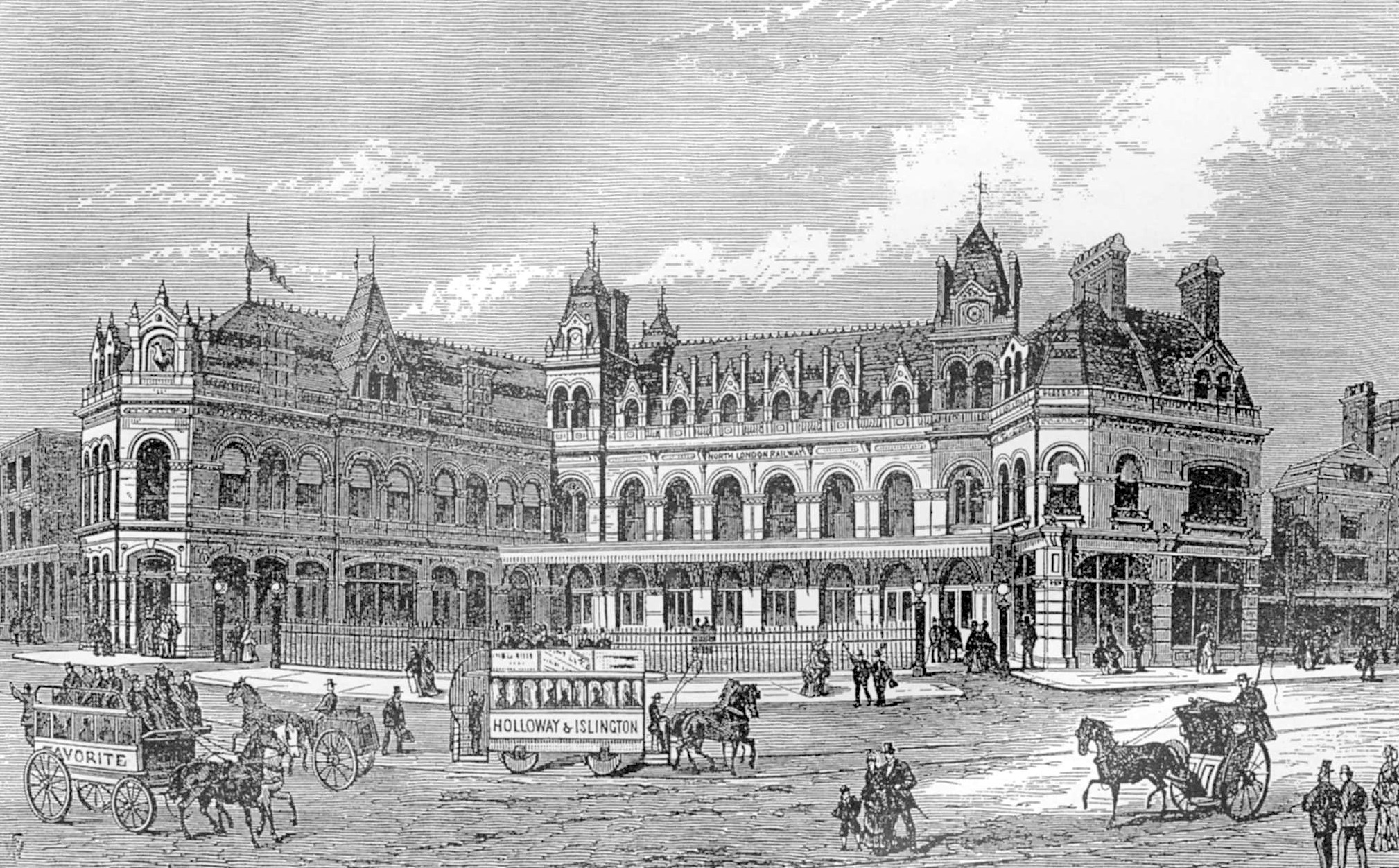
1968 brought the Victoria line to Highbury & Islington which may have increased access to the Fields for fans, but in reality was also one of signs that the decline in Islington and Highbury was reversing.
Wholesale changes in mortgage rules meant middle-class families could buy the houses and rehabilitate them. The trend was intensified by estate agents and speculators, and working-class tenants were forced or encouraged to leave. Conservation areas were formed and traffic schemes put into operation. Local groups of residents formed to have their voice heard in all this change.
Highbury Fields Association
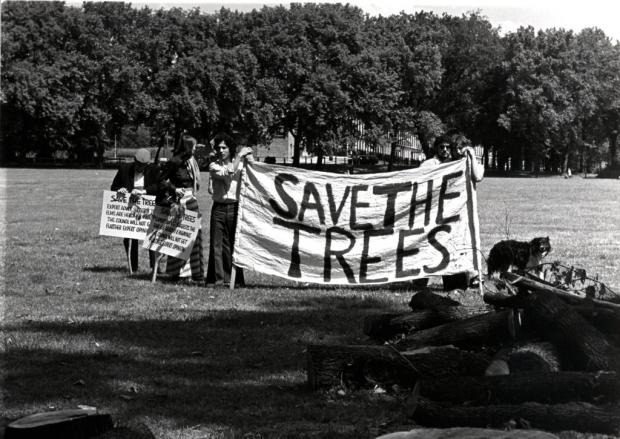
In 1966 the GLC noted that the original planting in 1885 of avenues of trees had alternated London planes and elms. The planes were being hindered in their growth by the elms and the GLC wanted a culling to allow the planes to flourish. Islington Council objected and the plan was shelved. By 1975, another threat to the elms had emerged - Dutch Elm Disease - and the Council now sought to cut down thirty one of them as there seemed little hope that they would survive. The Highbury Fields Association was formed to meet this threat, both to impress upon the council the need for consultation with residents but also to discuss mitigation strategies and alternative approaches.
All the elms were lost with the last - one that grew near the entrance to the swimming pool that replaced the Lido - felled in 2009, but those who created the Association realised from the outset that its activities would extend way beyond that particular crisis; the HFA continues to advocate for residents' interests in planning, encouraging reuse rather than demolition, Council funding of the area, Fields maintenance, local traffic issues and wider Council and TfL plans.
Sources
- Sugden, K. (1984) History of Highbury
- Nelson, J. (1811) The History of Islington
- Baggs A.P., Bolton D.K. and Croot P.E.C. (1985) Islington: Other estates, in A History of the County of Middlesex
- Mullen M.A. (2008) Highbury House and its Garden 1778-1938: From Pastoral Idyll to Urban Streets
- Willats E.A. (1986) Streets with a Story, The Book of Islington
- Tomlins T.E. (1858) A Perambulation of Islington
- Islington Gazette (2017) ‘It will turn into a slum!’ 132 years of rows over use of Highbury Fields
